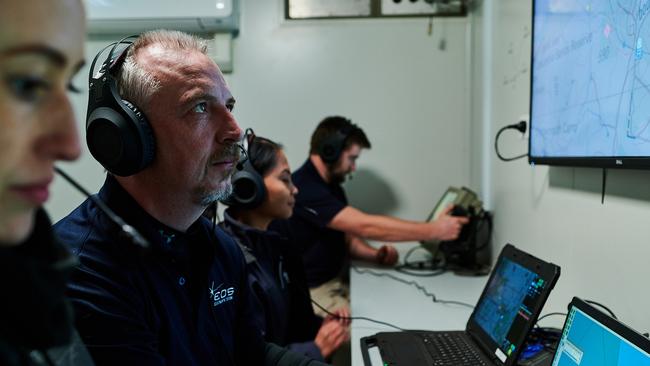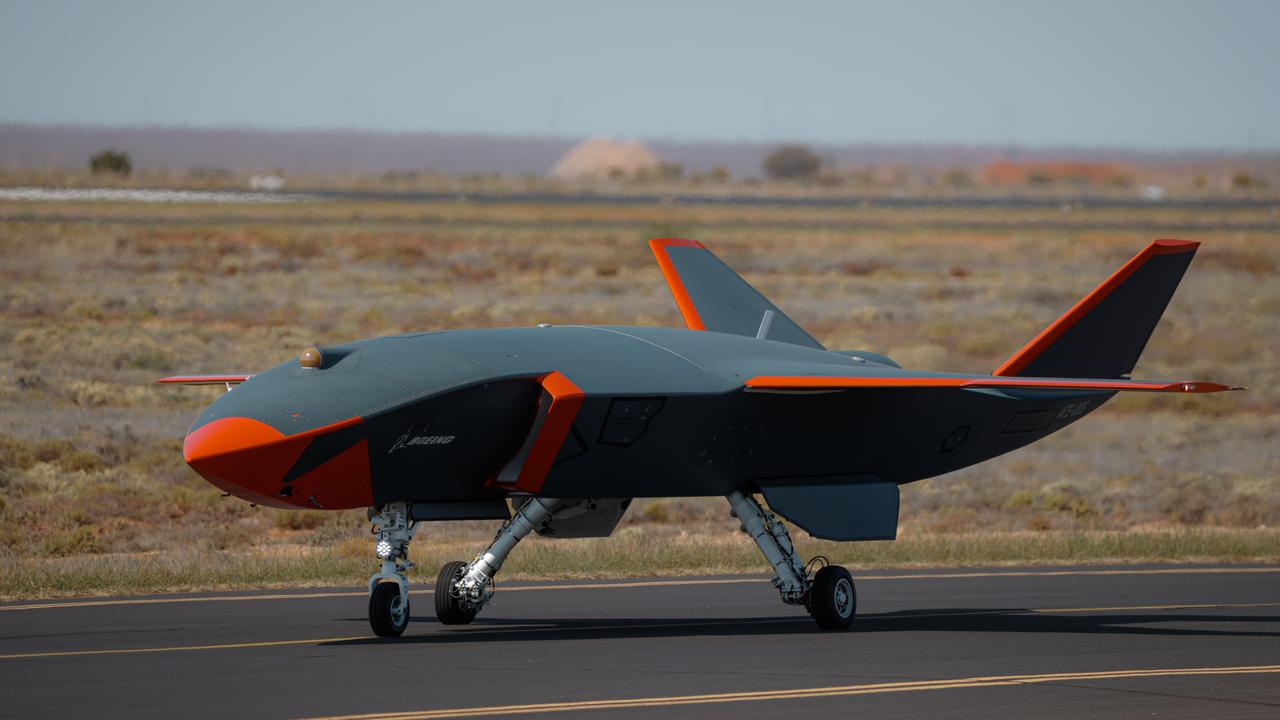Armed drones in future wars: ADF needs asymmetric technology
While Australia remains preoccupied with a possible conflict of massed conventional forces, some conflicts involve use of small, relatively cheap aerial systems.

Eventually the technology in science-fiction movies becomes reality, and high-speed robot drones blasting away at individual humans is already happening in grey-zone and under-reported conflicts around the world.
While Australia remains preoccupied with a conflict involving China with massed conventional forces, events in Syria, Gaza, Ukraine and the Caucuses paint a different picture of what a future war might look like.
These hybrid conflicts involve a mixture of old technologies combined with an increasing use of small, relatively cheap aerial systems – including loitering munitions and hand-launched quadcopters – incorporating developments in image recognition software and artificial intelligence.
Greatest progress has been made in ground and air-ground combat, though uninhabited and robotic systems are also making great strides in the air-to-air and naval domains. Most of these developments still require a human in or on the loop – often for legal reasons – but the technology already exists to produce swarms of deadly, small, autonomous, self-configuring armed drones.
One graphic taste of a possible future for land conflict was the brief but intense war between Azerbaijan and Armenia over the disputed Nagorno-Karabakh region in late 2020. Being far from Australia and involving unpronounceable names, it received little coverage in the media, but defence planners sat up and took note. It was one of the most lopsided military conflicts in recent history, with Azerbaijan achieving a crushing victory by the application of new technologies, particularly drones equipped with stand-off missiles.
Christian Armenia and Muslim Azerbaijan have been at each other’s throats for a millennium, with neither gaining the ascendancy for long. In a myriad of previous conflicts they have fought themselves to a standstill with one side nominally finishing ahead, and then the other. Not this time.
Armenia fielded a large and heavily armed conventional force structured around hundreds of Russian Main Battle Tanks and heavy air defence systems – but this time Azerbaijan did something different. To their equally heavily armed classic military, they added loitering munitions from Israel and missile-carrying UAVs from Turkey.
As a consequence of arms embargoes on Turkey, that country has developed an impressive defence industry base, helped by input from a number of other nations, including periodically Israel.
This has led to the development of systems such as the Bayraktar TB2 drone, which can carry 150kg of smart munitions and stay aloft for more than 24 hours.
Turkey has successfully used them in small numbers against Kurds on home soil, in Syria and also in Libya.
Because of their size they are invisible to the naked eye when operating at a combat altitude of 20,000 feet and are similarly difficult to detect by radar and electro-optical systems, using a lot of carbon fibre in their construction.
Azerbaijan purchased a number – believed to be several dozen – in mid-2020 and started planning their immediate co-ordinated use against Armenian forces.
After first deploying Israeli loitering munitions to take out Armenian radar sites and missile batteries, the drones then started methodically targeting Armenian armoured vehicles, artillery, fortified positions and command and control nodes, picking them off at will. The brief tally is that in a few weeks they destroyed around 200 Armenian Main Battle Tanks with complete impunity – and gun camera footage showed enemy soldiers cowering in trenches having no idea where the rain of guided missiles was coming from while at the same time being powerless to protect themselves.
The result was that Armenia surrendered and handed Nagorno-Karabakh over to Azerbaijan, possibly ending the centuries-old dispute forever. There were a number of other factors, such as Azerbaijan using mercenaries from Syria to limit their own casualties, and more modern equipment overall – but almost all analysts agree that the critical game-changing elements were the cheap, numerous, semi-autonomous drones using target-recognition software.
If these had been deployed against the Australian Army the consequences might have been equally lopsided because the ADF has not yet made any significant investments in anti-drone systems and possesses no loitering munitions capability.
Current acquisitions such as the Boxer 8x8 and future IFVs have defensive capability against conventional threats with 30mm main guns and antitank guided missiles.
However these would have limited effectiveness against something like a high flying Bayraktar attacking from the near-vertical and even less against a quadcopter purchased from a hobby shop flying in low and fast with a 1kg shaped-charge warhead.
Australian industry is thinking about the anti-drone challenge, with companies such as EOS developing a laser and gun system and DroneShield with electronic countermeasures, but for the moment the army seems to be only politely curious about these products.
The RAAF is focused on air combat but needs to think urgently about defending bases, most of which are highly vulnerable. The RAN is investing in hugely expensive and very capable area air and missile defence systems but would be helpless against a swarm of tiny drones targeting every helicopter on the deck of an LHD.
While the conventional threat from China seems to be the main one, there are plenty of scenarios for future combat that are just as concerning, if not more so.


